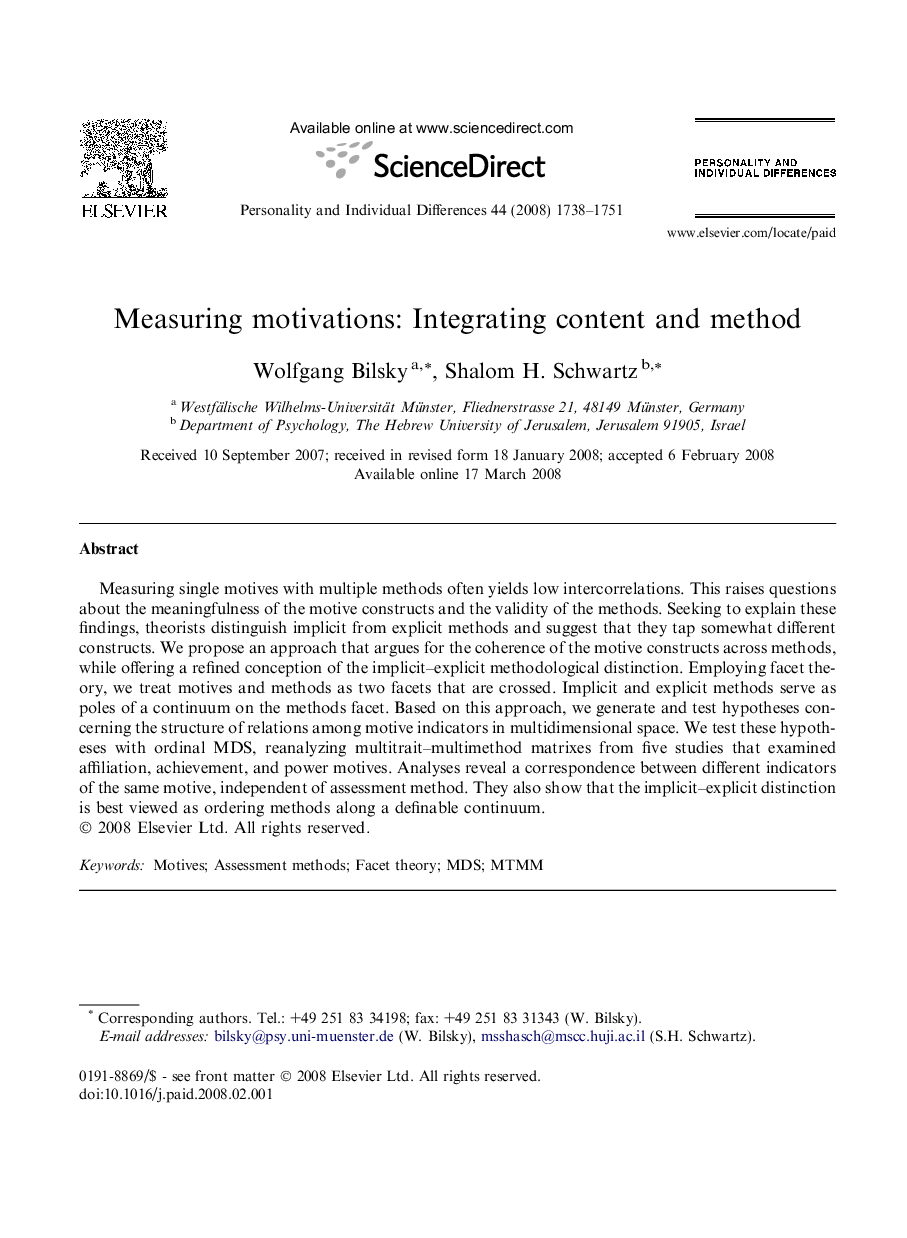| Article ID | Journal | Published Year | Pages | File Type |
|---|---|---|---|---|
| 892935 | Personality and Individual Differences | 2008 | 14 Pages |
Measuring single motives with multiple methods often yields low intercorrelations. This raises questions about the meaningfulness of the motive constructs and the validity of the methods. Seeking to explain these findings, theorists distinguish implicit from explicit methods and suggest that they tap somewhat different constructs. We propose an approach that argues for the coherence of the motive constructs across methods, while offering a refined conception of the implicit–explicit methodological distinction. Employing facet theory, we treat motives and methods as two facets that are crossed. Implicit and explicit methods serve as poles of a continuum on the methods facet. Based on this approach, we generate and test hypotheses concerning the structure of relations among motive indicators in multidimensional space. We test these hypotheses with ordinal MDS, reanalyzing multitrait–multimethod matrixes from five studies that examined affiliation, achievement, and power motives. Analyses reveal a correspondence between different indicators of the same motive, independent of assessment method. They also show that the implicit–explicit distinction is best viewed as ordering methods along a definable continuum.
